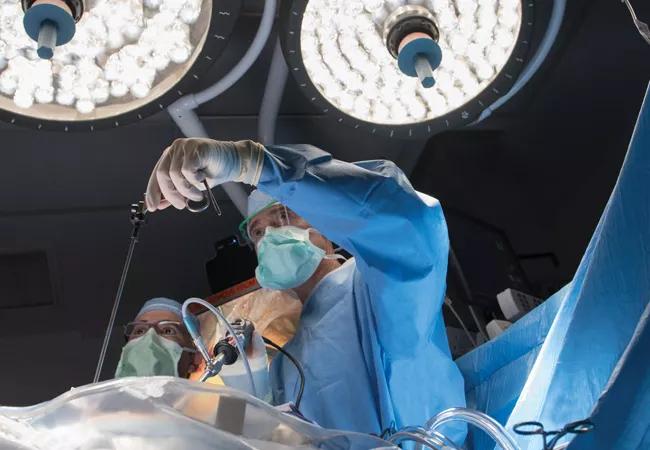Three steps to delivering quality, consistent care

Shorter hospital stays. Reduced complications. Lower readmission rates. These are at the top of every surgeon’s wish list. Why? Because they are key to improving patient outcomes and reducing healthcare costs.
Cleveland Clinic is a non-profit academic medical center. Advertising on our site helps support our mission. We do not endorse non-Cleveland Clinic products or services. Policy
For the past 17 years, Cleveland Clinic has been leading the effort to develop, implement and improve enhanced recovery pathways for abdominal surgery. In spite of continued work to promote the benefits of recovery pathways, a survey by the SAGES Surgical Multimodal Accelerated Recovery Trajectory (SMART) Enhanced Recovery Task Force revealed that only 50 percent of surgeons are utilizing an enhanced recovery protocol while 30 percent are unaware of this best practice in care.
According to Conor Delaney, MD, PhD, Chairman of the Cleveland Clinic Digestive Disease & Surgery Institute, “using optimized, evidence-based protocols is vital for improving the quality, efficiency and value of care. We have the research to prove that enhanced recovery pathways help patients return home sooner with fewer complications. We just need to share that information with as many surgeons as possible.”
Abdominal surgery presents the most significant opportunity for surgeons to enhance patient recovery because of the complexity of the abdominal area and the variability in patient outcomes. If surgeons fail to use recovery pathways for abdominal surgery, there are much higher rates of complications and extended hospital stays. This is the case for both open abdominal surgery and laparoscopy. However, recovery pathways used along with laparoscopy will give the patient the best possible outcome.
In addition to digestive disease applications, surgeons in urology, women’s health and orthopaedic care are beginning to use enhanced recovery pathways.
Enhanced recovery pathways help surgeons treat patients more consistently before, during and after surgery. Here is Cleveland Clinic’s formula for surgical success:
The main obstacle to adopting enhanced recovery pathways is physician buy-in. “Most surgeons think they’re too busy to learn something new,” explains Dr. Delaney. “But these pathways are very simple and offer proven results. In fact, our institute has used pathways to reduce hospital stays by 20 percent.”
Cleveland Clinic is focused on increasing awareness and driving the adoption of standardized protocols through ongoing education. In addition to publishing research on enhanced recovery strategies, the Digestive Disease & Surgery Institute is offering courses and holding summits at various locations around the world. Its leaders are also giving educational presentations in partnership with regional and national surgical societies.
Enhanced recovery pathways aren’t just about improving the quality of patient care but also reducing the overall cost of care. According to Dr. Delaney, “fewer complications and shorter hospital stays mean significant cost savings. These benefits are vital for controlling the cost of healthcare in the U.S.—an ongoing issue for government and healthcare leaders.”

Insights on guiding treatment decisions

Strong patient communication can help clinicians choose the best treatment option

Brief pearls for diagnosis and management of ascites and relevant conditions associated with decompensated cirrhosis

Hard-to-treat GI disorders benefit from multidisciplinary approach

How an IBD specialist pharmacist enhances patient care

Rate is lower with tunneled intravenous catheters

Cleveland Clinic’s ACO takes a team of teams approach

A multispecialty team was essential for this challenging case